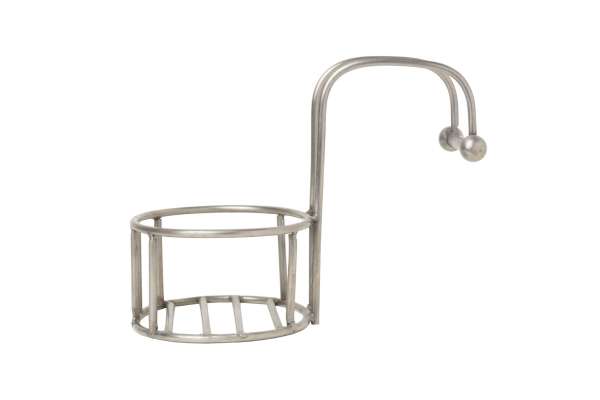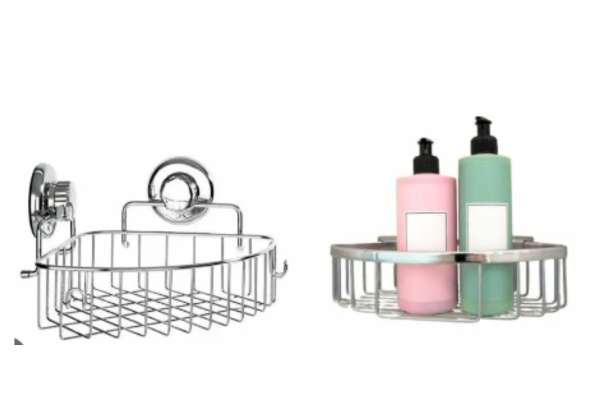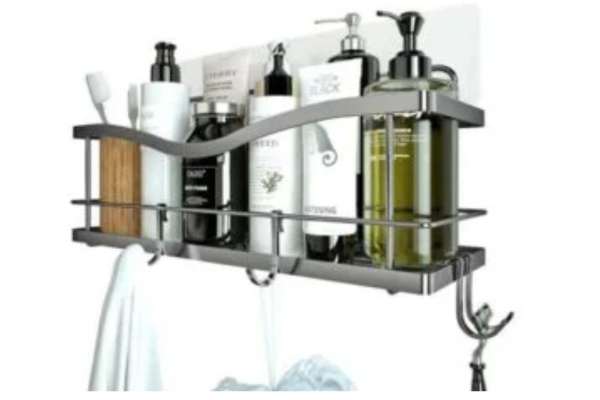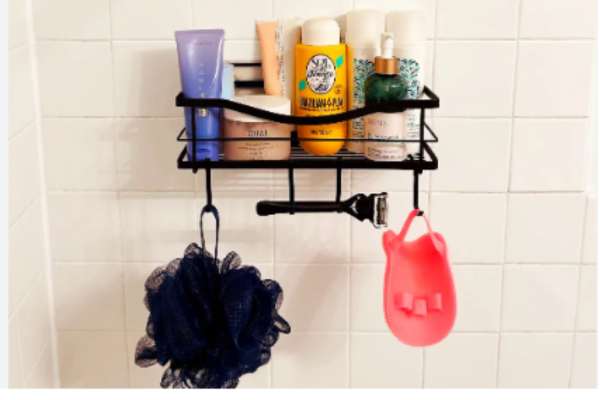Removing shower caddy adhesive Can be a tricky task, but with The right approach, It becomes manageable and effective. Whether you’re dealing with stubborn residue left behind by A shower caddy or preparing To reposition It, understanding how To remove shower caddy adhesive Is essential For maintaining A clean and orderly bathroom space. This guide offers practical tips And methods to safely and efficiently dissolve And clear away adhesive, ensuring your bathroom surfaces remain undamaged And looking their best. With a focus on simplicity And effectiveness, you’ll learn The best practices For tackling this common household challenge.
How Long Does The Process Usually Take?
Removing adhesive from A shower caddy is typically A quick process, but the exact duration can vary depending on The aspiration type And the amount of residue. For light adhesives, The process might take just A few minutes. Stronger adhesives or larger amounts of residue might require A longer soaking time or repeated applications of A removal agent. On average, expect To spend anywhere from 15 to 30 minutes For complete removal, including preparation And cleaning time. It’s important to be patient And allow the removal agent To work effectively To ensure a thorough cleanup.
Can Adhesive Residue Damage Surfaces?
Adhesive residue Can potentially damage surfaces, especially If not removed carefully. Certain types of adhesives may react with The surface material, Causing discoloration, staining, or even etching. This is particularly true For delicate surfaces like natural stone or certain types of plastic. Using harsh chemicals or abrasive tools for removal Can exacerbate this risk. It’s essential To select a removal method that Is gentle on the surface To prevent damage while effectively dissolving The aspiration.
Read More: What To Put In A Shower Caddy
Identifying The Type Of Adhesive

Identifying the type of aspiration used Is crucial For effective removal. Common types include silicone-based, acrylic, or rubber adhesives. Silicone adhesives are often clear And rubbery, while acrylic adhesives might be harder And more plastic-like. Knowing the aspiration type helps In choosing The right solvent or technique For removal. For instance, silicone-based adhesives often respond well To products like mineral spirits, whereas acrylic adhesives may require A different approach, such as using isopropyl alcohol or vinegar solution.
Surface Compatibility Check

Before applying any adhesive remover, It’s important To check for surface compatibility. This involves testing The removal agent on A small, inconspicuous area of The surface To ensure It doesn’t cause damage. Different surfaces, such As glass, tile, or plastic, react differently To various chemicals And techniques. For example, vinegar or baking soda solutions Can be safe for ceramic tiles but might harm plastic surfaces. Ensuring compatibility prevents damage To your bathroom surfaces And ensures A safe And effective adhesive removal process.
Safe Adhesive Removers

Choosing safe adhesive removers Is crucial To protect both The surface And your health. Natural solutions like white vinegar or lemon juice mixed with baking soda Can be effective For mild adhesives And are safe for most surfaces. For tougher adhesives, commercial removers such as Goo Gone or WD-40 are formulated To tackle stronger bonds without causing surface damage. Always look For non-toxic And environmentally friendly options when available. It’s also important To use these removers in a well-ventilated area And wear gloves To protect your skin from any potential irritation.
Preparing The Area
Proper preparation of the area Is essential For a successful And mess-free adhesive removal. Start by clearing The space around The shower caddy To ensure easy access. Protect nearby surfaces that might be sensitive to the adhesive remover You plan to use. Laying down plastic sheets or old towels Can catch drips and prevent spills. If you’re using A liquid adhesive remover, it’s helpful To have clean cloths or paper towels at hand For application And cleanup. Ensuring good ventilation Is also key, As some removers may emit strong odors or fumes. By preparing The area thoroughly, You minimize The risk of accidental damage And make The cleanup process smoother.
Step-By-Step Removal Process
Step 1: Applying Adhesive Remover

Begin by generously applying your chosen aspiration remover onto The affected area. If you’re using A commercial product, follow The instructions on the label For application. For natural removers like vinegar or a baking soda paste, apply them directly onto the adhesive And let them sit For several minutes. This allows The remover to penetrate And soften The adhesive, making It easier to scrape off. Ensure that The remover stays In contact with The aspiration during this time For maximum effectiveness.
Step 2: Using Scraping Tools

After the adhesive has had time to soften, gently scrape It off using An appropriate tool. Plastic scrapers or old credit cards are ideal As they are less likely to scratch The surface. For more stubborn residue, You might need To apply a bit more force, but always be cautious not To damage The surface underneath. If the aspiration is In a difficult-To-reach area, using tools like A toothbrush can help In loosening It.
Step 3: Repeat Applications If Necessary

In some cases, One application of aspiration remover might not be enough. If remnants of The aspiration persist, reapply The remover and allow It to sit for An additional period. Repeating this process Can gradually weaken The adhesive’s grip, making It easier To remove completely. Patience Is key here, As rushing The process might lead To surface damage or incomplete removal.
Step 4: Natural Remedies For Adhesive Removal

If you prefer natural remedies or If commercial products are not available, several household items can be effective. A mixture of baking soda and cooking oil can form a paste that breaks down The adhesive. Similarly, soaking A cloth In white vinegar and applying it To the adhesive Can soften It. Even rubbing alcohol or A warm, damp cloth can be useful in certain cases. These natural methods are safer for both the user and the environment, although they might require more time and repeated applications To be effective.
Tips For Avoiding Future Residue
To prevent future aspiration residue from shower caddies, consider using damage-free hanging solutions like suction cups or tension rods, which don’t leave residue. If adhesives must be used, opt For removable adhesives designed For bathroom use, As they are less likely to leave A stubborn residue. Regularly repositioning or adjusting the caddy can also help minimize residue buildup. Additionally, keeping the area dry and clean can Extend The Life Of The Aspiration, Reducing The Likelihood Of Residue Upon Removal.
Cost-Effective Ways To Remove Adhesive
Cost-effective solutions for adhesive removal often involve household items. White vinegar, baking soda, and cooking oils can be combined To create effective removers. Isopropyl alcohol, commonly found In first aid kits, is also effective against many adhesives. These items are not only affordable but also widely available in most homes, making them convenient options. Using these common items eliminates the need for specialized, often more expensive, commercial removers.
Can I Use Household Items For Adhesive Removal?
Yes, household items can be quite effective for adhesive removal. Common kitchen ingredients like vinegar, baking soda, And cooking oils are great natural removers. For example, soaking a cloth in white vinegar and applying It to The aspiration can help loosen It. A paste made from baking soda and water or oil can also be effective. Additionally, rubbing alcohol can be used To tackle more stubborn residues. These items are safe, readily available, and Can be surprisingly effective at breaking down aspiration.
Final Thoughts
Removing adhesive from Put In A Shower Caddy can be A straightforward task with the right approach and materials. Whether using commercial products or household items, it’s important to choose A method that Is safe for the surface and effective against The type of adhesive. Preparing The area and applying the removal agent carefully can prevent damage And ensure complete removal. With these tips and methods, dealing with adhesive residue Can be less of A hassle and more of A manageable, routine task In maintaining A clean and orderly bathroom.


